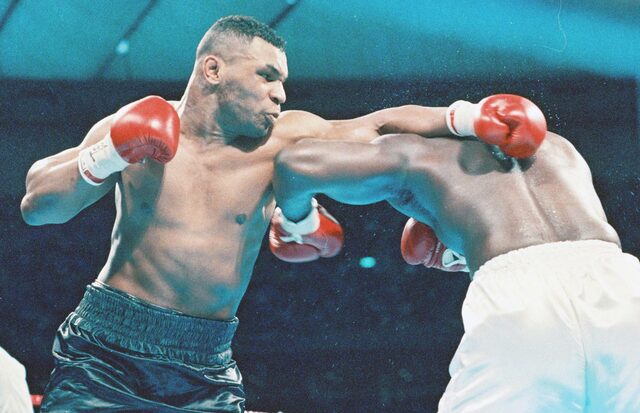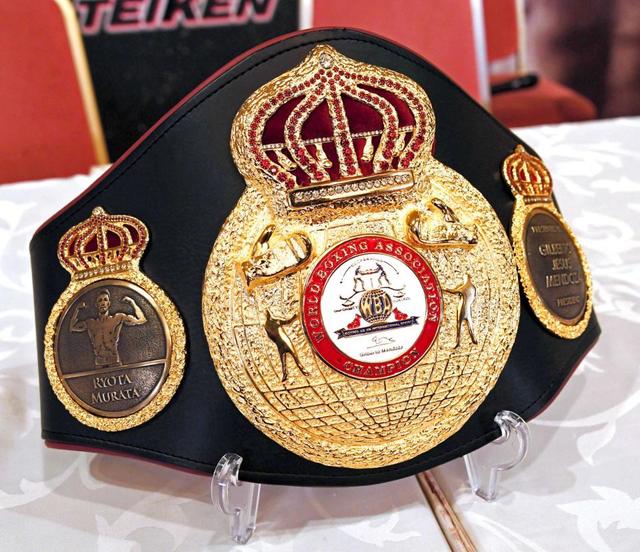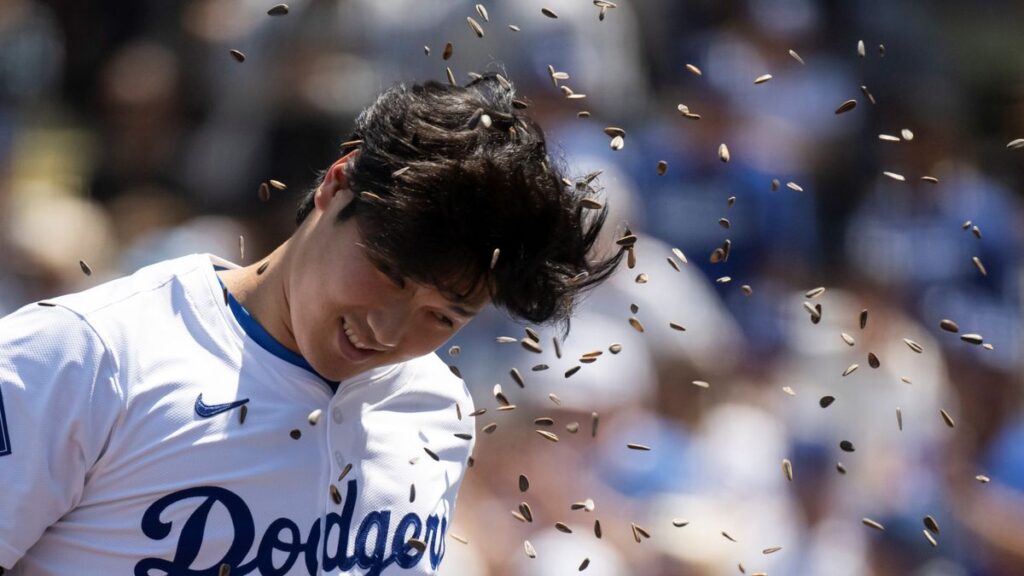
Boxing isn’t just about exchanging punches, it’s a sport that requires strategic thinking and precise technique.
In particular, defensive techniques are considered to be the basics of survival in the ring.
Among them, “ducking” is a very effective technique that creates a counter opportunity by skillfully avoiding the opponent’s attack.
In this article, we will take a deep dive into the importance of ducking in boxing and comprehensively explain everything from the correct method of ducking, to training methods, and even techniques for applying it in actual combat.
We aim to be a guide for all boxers to master ducking, from beginners who have just started boxing to advanced boxers who want to hone their skills.
目次
What is ducking? – An essential defensive technique in boxing
Ducking in boxing is more than just a technique for avoiding punches, it is the basis of strategic defense and countering.
This movement is used to secure an advantageous position while deftly dodging the opponent’s attacks.
Mastering ducking is essential to long-term success in the ring, and is one of the techniques a boxer needs to stay safe and look for opportunities to attack.
ducking
Ducking is the act of quickly lowering your body to avoid an opponent’s attack.
This technique not only directly avoids punches, but also toy with the opponent and throw them off balance, creating opportunities for counterattacks.
Basics of ducking
When ducking, it’s important to bend your knees and lower your body.
This movement lowers your center of gravity and allows you to move quickly. The key is not just to stay low, but to always be ready to attack.
The key to this is to maintain a stable stance with your feet shoulder-width apart and your knees slightly bent.
Why ducking is important in boxing
The importance of ducking goes beyond its role as a defensive technique.
This movement increases the boxer’s ability to predict his opponent’s attacks and react appropriately.
Furthermore, ducking provides a great opportunity to take advantage of the momentum of your opponent’s attack and mount a counterattack.
By using this technique effectively, a boxer can avoid attacks while increasing his chances of inflicting damage on his opponent.
Ducking is one of the basics of boxing, and is an essential technique for building a foundation for good defense and attack.
Mastering this technique allows boxers to fight longer, safer, and more effectively in the ring.

Technical points of ducking
Understanding the technical points of ducking is essential to skillfully evading your opponent’s attacks and securing advantageous positions in boxing.
This section focuses on correct ducking posture and effective ducking timing.
Correct ducking posture
In order to successfully duck, it is important to first acquire the correct posture. The basic posture is to keep your feet shoulder-width apart and your knees slightly bent.
At this time, your weight should be on the front half of your feet, and while bending your knees, lower your body without leaning your upper body forward. The key is not to lower your head, but to lower your entire body from your knees.
This makes it easier to maintain balance and allows for faster movement after ducking.
Effective ducking timing
When ducking, it is important to anticipate the opponent’s punch and start moving accordingly.
If you can identify the signs of your opponent’s attack, you can reduce unnecessary movements and achieve efficient ducking.
Specifically, it is ideal to predict the next attack based on the movement of the opponent’s shoulders, line of sight, and foot position, and move just before that attack.
To grasp this timing, it is essential to gain practical experience, and it is recommended to develop your sense by doing a lot of sparring.
By mastering the correct ducking posture and timing, a boxer can not only effectively avoid his opponent’s attacks, but also create opportunities for counterattacks.
This basic yet advanced technique is the key to success in boxing.

How to practice ducking
Ducking is a basic defensive technique in boxing that allows you to skillfully evade your opponent’s attacks and create counter opportunities.
In order to acquire this technique, correct practice methods and continuous training are essential.
Here we will introduce practice methods for beginners to advanced users to learn ducking efficiently.
Ducking practice for beginners
-
Learn basic posture : Before you start ducking, make sure you have the correct boxing stance. Place your feet slightly wider than shoulder width, and bend your knees slightly to lower your center of gravity. Ducking from this position will help you maintain your balance.
-
Practice in front of a mirror : Take a stance in front of a mirror and perform the ducking motion slowly. Instead of leaning your body to the left or right or leaning your upper body forward, focus on lowering your body directly from your knees. It is important to use correct form.
-
Practice with a rope : Practice ducking using a rope. Practice ducking by fixing the rope at two points and passing under it. By changing the height of the rope, you can develop the ability to handle various heights.
Ducking tips for advanced users
-
Increase your reaction speed : As you become more advanced, you will not only need to duck accurately, but you will also need to increase your reaction speed. By practicing avoiding actual punches while sparring with a partner, you can naturally improve your reaction speed.
-
Improve your situational judgment skills : In real combat, you need to instantly decide which attack to use ducking against. Improve your situational awareness skills by practicing predicting your opponent’s movements and reading where their next attack will come from.
-
Practice counterattacks from ducking : Counterattacks after ducking are an opportunity to inflict great damage on your opponent. By practicing quickly recovering from ducking and delivering counter punches, you can acquire skills that combine offense and defense.
Use these exercises to hone your ducking skills and improve your boxing defensive abilities.
Whether you are a beginner or an expert, it is important to stick to the basics and acquire the ability to apply them according to the situation.
With practice, ducking becomes more than just a defensive technique and becomes an important element in creating strategic advantage.
When you start practicing, it is effective to clearly set your own level and goals and create a training program that matches them.
In addition to improving your technique, improving your physical strength, flexibility, and reaction speed will also directly affect your ducking performance, so try to improve your overall physical condition.
It is also helpful to use video analysis as part of your training.
By recording your ducking movements on video and watching them later, you can objectively evaluate and make corrections for improvements.
Getting feedback from professional boxers and trainers can also be a great help in improving your technique.
Finally, ducking is a skill that can be learned through practice and repeated practice.
Although theoretical knowledge is important, the most important thing is to actually gain experience in avoiding many punches in the ring.
The ability to read your opponent’s attacks, react instantly, and counterattack appropriately depending on the situation will naturally be refined through actual combat.
Please actively incorporate ducking practice methods and aim to improve your technique.
By completing each step one by one, your boxing skills will steadily improve and your performance in the ring will change dramatically.

Practical techniques using ducking
Practical techniques using ducking are not only a powerful defense in boxing, but also create great opportunities to inflict damage on your opponent.
Here, we will focus on two particularly effective techniques: “counter punch from ducking” and “combination with ducking.”
Counter punch from ducking
Counter punching from ducking is a technique of avoiding the opponent’s attack and taking advantage of the gap to counterattack.
For this technique to be successful, please note the following steps:
- Anticipate your opponent’s punches : Read your opponent’s attack patterns and plan ahead which punches to duck to avoid.
- Avoid by ducking : Use ducking to get under the opponent’s punch the moment you get close to it. At this time, bend your knees and lower your body so you can move quickly.
- Throw a counter punch : Quickly recover your stance from a ducked position, then take advantage of the gap when your opponent’s attack ends and unleash a counter punch. At this time, aim for an effective blow by taking advantage of the fact that the opponent is off-balance.
Mastering this technique requires speed and accuracy. It is important to increase reaction speed and develop the ability to predict the opponent’s movements.
Combination with ducking
A combination of ducking is a tactic that combines multiple attacks rather than a single punch.
This technique uses ducking as part of the attack.
- Create an attacking rhythm with ducking : By sandwiching ducking between attacks, you create an unpredictable rhythm and play with your opponent’s defense.
- Launch a series of attacks : Directly from ducking, connect punches from various angles, such as uppercuts and hooks. By ducking, you temporarily disappear from your opponent’s sight, making your attacks harder to read.
- Preparing for the finish : At the end of the combination, aim for an effective finish by delivering a particularly damaging punch.
When performing this technique, the key is to have a smooth flow of sequential movements.
By moving between ducking and punching as quickly and fluidly as possible, you can overwhelm your opponent without giving them any openings.

Summary of boxing techniques that make full use of ducking
Ducking is more than just a defensive technique in boxing.
With proper learning and practice, you can not only skillfully avoid the opponent’s attacks, but also create opportunities for attacks.
In this article, we have explained the basics of ducking, as well as advanced practical techniques using ducking.
-
Reaction speed and the ability to predict your opponent’s movements are key when counter punching from ducking . By ducking and launching a counterattack the moment you avoid an opponent’s attack, you can deliver a surprising blow to your opponent.
-
In the combination that combines ducking , we introduced a strategy that incorporates ducking as part of the attack rhythm, allowing the opponent to miss predictions and applying pressure with multi-pronged attacks. This technique increases the variety of attacks and increases the psychological pressure on the opponent.
The technique of ducking is an important element not only to avoid attacks, but also to enable a strategic approach.
It is essential to improve your boxing skills to hone these techniques through practice and be able to react naturally in actual fights.
Improving your physical conditioning, training your reaction speed, and thinking strategically are equally important.
Boxing is not only about technique, but also a combination of physical strength, mental strength, and tactics.
By mastering techniques such as ducking, your boxing will evolve to a new level.




